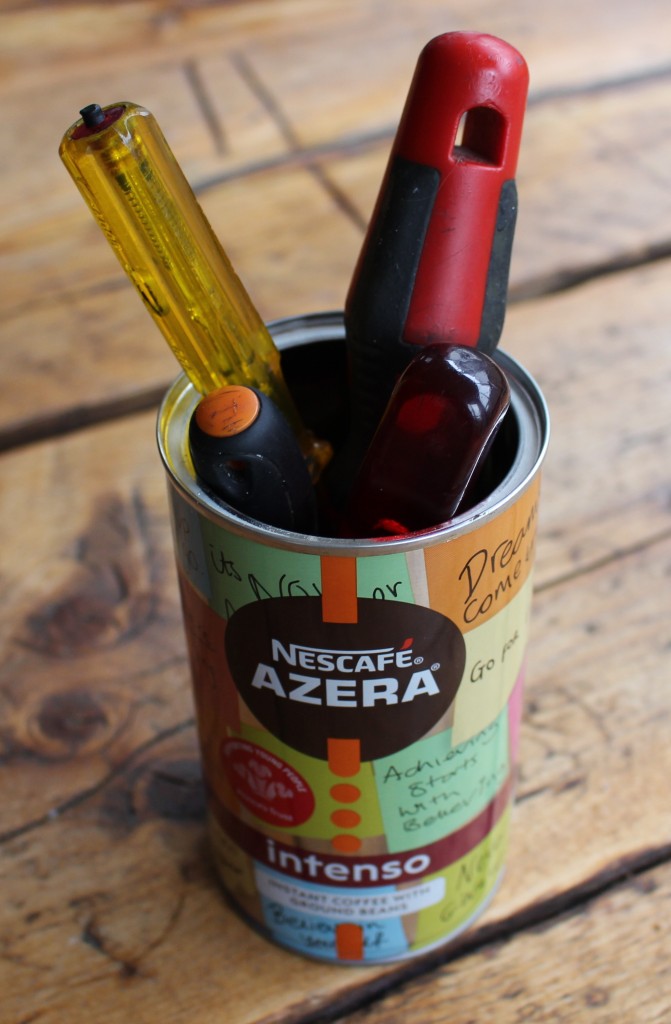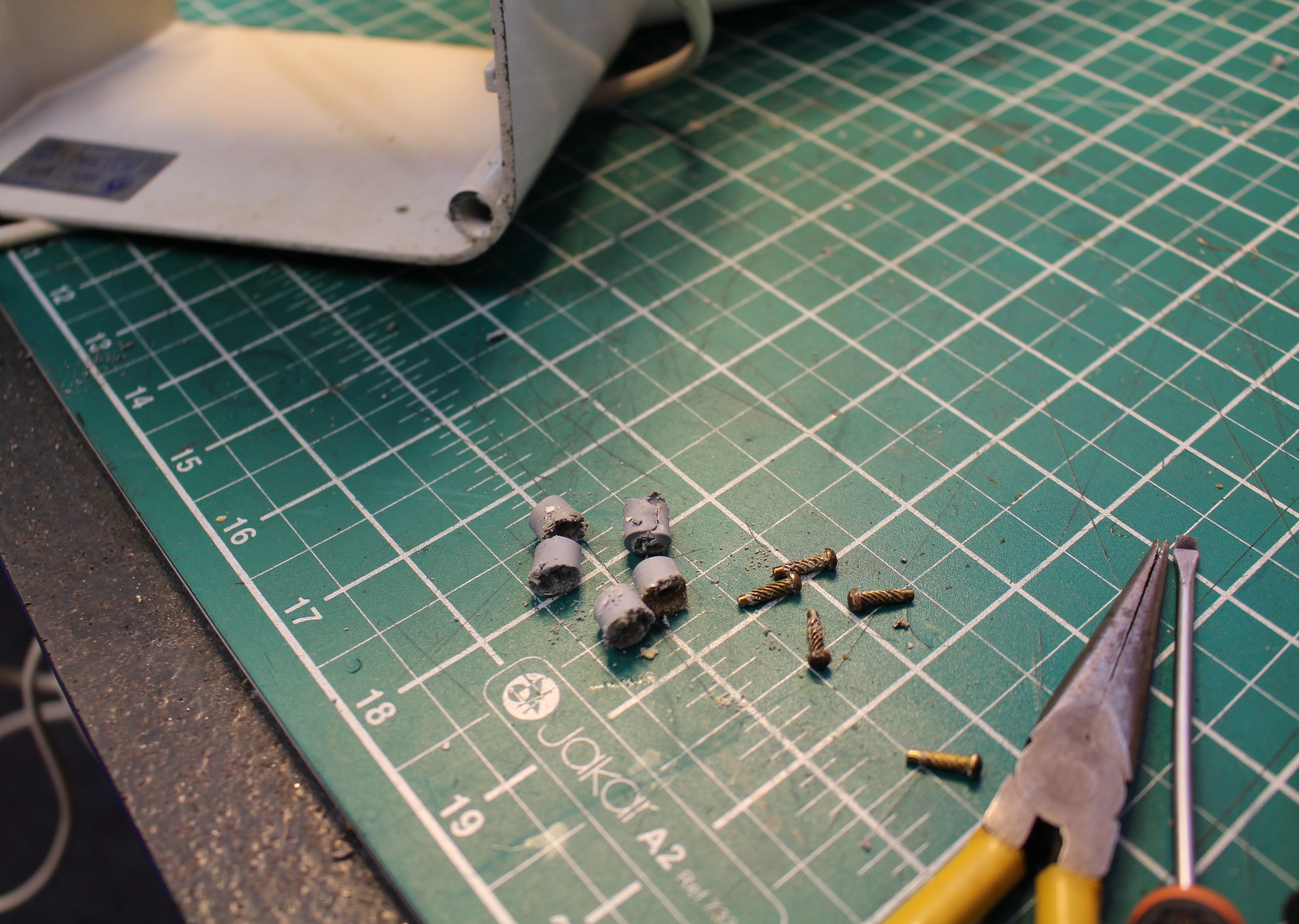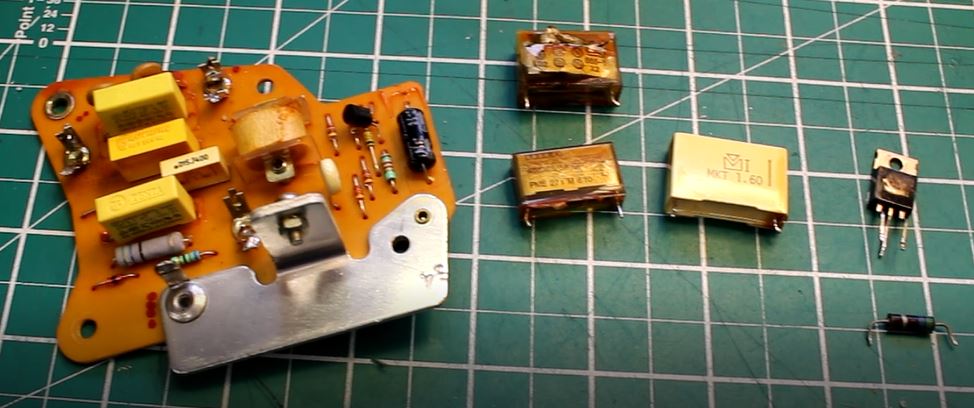Rubber bands, toothbrushes and cat food
This time in the workshop, I thought I’d give you a behind the scenes glimpse into just some of my repair world, by sharing some of the shed-tastic-things that I do regularly to save things from the dump.
Before we start and without meaning to sound pompous, repair is sometimes a bit of an art. When manufacturers no longer make something, or the part you need never existed in the first place, it can sometimes mean getting creative in order to make something function again. This takes time of course and can even lead nowhere, but it ain’t half-satisfying when it all works out. Google a problem and there’ll be a link, video or picture explaining an appliances’ issue and maybe a quick-hack repair (if you’re lucky), but it’s often the humble tricks of the trade, which breathe new life back into something.
Hanging on to ‘useful’ repair nick-nacks also requires almost concerning levels of organisation, which can mean more expense on things like containers and storage. I’m allergic to more cost. But by using ‘free’ packaging that comes with many everyday consumables, one can save cash by repurposing. Still with me, thought so.
As you might have guessed by now, I dislike waste immensely and will always do my best to avoid it. So, here is my random, if not weird, top five cash-saving, waste-busting, possibly ingenious ideas even, that might just serve you well too. And remember, if you don’t use any of the following suggestions for repair, there’s nothing like doing a bit of junk modelling to pass the time on a cold winters’ night.
Five – old toothbrushes
We all (hopefully) use them, but I fear that far too many only hang around in bathrooms. So, stop throwing them in the dustbin, when it’s time for replacement. Why? Well, where do I start, quite frankly. Dirt and corrosion are the curse of many a broken lamp, bike and dust sucker. Toothbrushes make excellent cleaning tools by using the brush in small crevices, on bike chains, on electrical switches, or on vacuum cleaners. I could go on. Cut the brush bit off, and you have an excellent scraper, again, ideal for cleaning. Toothbrushes are usually made from high-grade plastics and have excellent properties. Many a time have I fashioned a plastic part from an old toothbrush handle.
It’s not just me finding new life in old toothbrushes. My good friends and fixing supremos, Danny and Karen Ellis (aka @menditaussie) in Oz, have also come up with some very useful re-purposing ideas. See video below. Give them a follow.

Four – torn washing-up gloves
Stop sniggering at the back, old rubber gloves (the Marigold type) can be re-purposed for many useful things, where elasticity and waterproofness are two qualities needed. I favour making rubber bands from them. Yes, you heard correctly. The next time your favourite flowery rubber gloves spring a leak, why not cut the arm bit down into slices, and you have a healthy supply of rubber bands. I use rubber bands to neatly store appliance flexes, before customer hand-over, it’s just more professional. Neat eh?

Three – take away pots and lids
Endless possibilities for these! The plastic ones make excellent batch cooking meal containers for the freezer as many will know, but what you might not have considered is that plastic lids also make a really good base to cut out small plastic templates, brackets and covers for all sorts of small repair jobs. Low-tech it may seem, but I’ve lost count of the times that I’ve made pretty decent replacement parts from old pots this way. I’ve even made lamp shade brackets from shampoo bottles and cosmetic pots, which tend to be a bit thicker and can be used when a superior finish or strength is required.
Two – empty coffee tins
We’re all coffee aficionados these days, and manufacturers have responded to the market’s expertise and perhaps snobbiness with some very funky packaging. I love funky packaging and really enjoy the artwork and logos manufacturers have now put on these colourful tins. They’re far to good to go in your recycling bin and can easily be rinsed out to make a handy storage container for all of those useful shed-trinkets. Many lids from Kenco and some of the supermarket-own coffee tins also fit regular tins of baked beans, tomatoes and cat food too, so save those lids to preserve a half-consumed tin of moggy grub. Waste packaging like this can even be educational! Coffee tins make excellent old-school string telephones for kids, teaching them how sound can be transmitted. Cool eh?

FixItWorkshop, Worthing, January 2022, re-using old lids. 
FixItWorkshop, Worthing, January 2022, handy screwdriver pot. 
FixItWorkshop, Worthing, January 2022, simple fun- a tin pot telephone!
One – a drinks can
Hopefully you’re not disappointed by the number one slot. I have been known to walk the streets in search of an old beer can if I have non in stock, for a repair, they’re that good! They’re usually made from aluminum, so won’t rust, are strong, abundant and effectively free.
Using a pair of scissors or sharp knife, spacers (shims) and washers can easily be fabricated on your kitchen table, but do take care as the metal edges are always sharp. I’ve often used a can in this way to make a scooter steer correctly or a lawn mower switch on again. Material is sometimes lost as moving parts wear. Sounds familiar right? Sometimes, a small trimming of can metal, in the right spot on a broken item, is all you need to make the difference between bin or box fresh.

Just remember: Cutting things out involved knives, scalpels and scissors and any sharp implement that might come to mind. Once the item you need is cut out, that might be sharp too. So, take care and take your time.


























